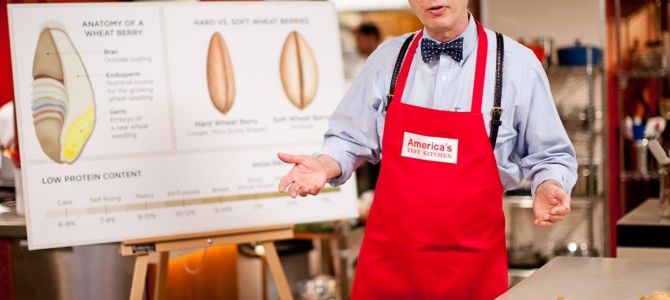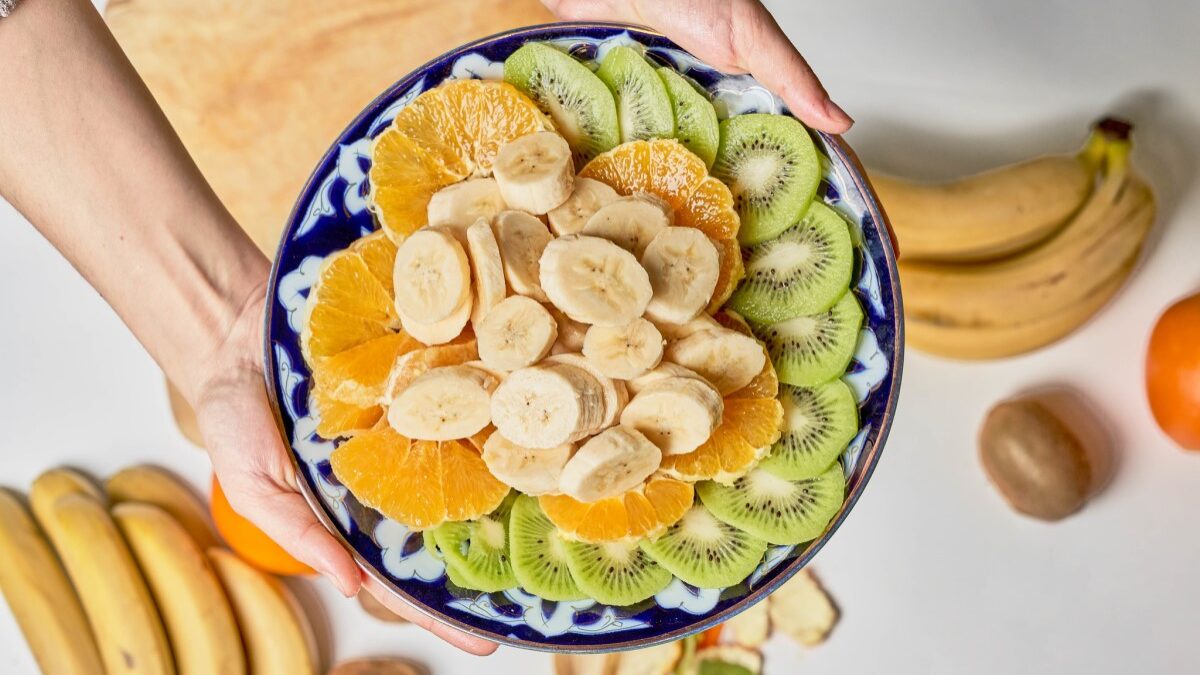
I hate most books about food. Go to any bookstore and you’ll find great masses of them, a swath of food porn books and magazines with lush photography depicting every meal as if it is being prepared for a Bacchanalian multi-course outdoor ethnic fusion dinner eaten off reclaimed wood tables under carefully strung tea lights, surrounded by bearded hipsters.
This is not the way real people eat, of course. For that, there’s Cook’s Illustrated.
Cook’s Illustrated is a magazine unlike any other in the media landscape, particularly compared to other magazines about food. It is the opposite of food porn, bereft of glossy ads. I love it for the same reason others hate its “soul-crushing wonkiness”: because of its inherent predisposition toward a rejection of the silly belief that food is art, not science. Food is an arena where being a perfectionist is a good thing, and creativity often leads to disaster and waste. Their shows, America’s Test Kitchen and Cook’s Country, are dedicated to finding the best way to do certain things, showing home cooks how to prepare dishes that have historically been American staples, and helping them avoid common mistakes. Cook’s believes there is a right way and a wrong way to do things, and finding the best way takes practice, testing, and time. Cook’s takes dishes that would be intimidating and makes them accessible, guiding home cooks from novice to semi-pro and giving you recipes that will turn out the same every time. And they have the best coq au vin recipe in existence.
Cook’s has developed a true community of followers who prefer its unique style. Where other magazines have suffered in recent years, it has prevailed, in large part due to the leadership of founder, editor, and publisher Christopher Kimball, who The New York Times described as looking “like someone who might’ve sold homeowners’ insurance to Calvin Coolidge”. He spoke to The Federalist about the unique positioning of Cook’s Illustrated within the media landscape, federal food policy, what we lose when we lose home cooking, and more.
The Federalist: Cook’s Illustrated is unlike any other food magazine I’ve ever read. What is it that makes you so unique?
Christopher Kimball: Well, we talk about and celebrate bad food. I know that sounds kind of silly, but it’s true. We always start with bad food whether it’s in the magazine or on the TV show. We always go: “The salmon sticks to the grill. The pie dough doesn’t roll out. This cake isn’t flat on top. These brownies have no chocolate flavor.”
Marion Cunningham, who died a few years ago, was a friend of mine and she used to work with James Beard. She did The Fannie Farmer Cookbook Redux in the seventies. She used to give free cooking classes once a month in Walnut Creek, her home, and she said the thing she learned was that everyone who was starting out cooking was scared of failure – that there was fear of failure.
The lesson I took away was the problem with most cooking people is: it looks easy and perfect. And everybody knows it isn’t. I mean, if you think about industries or businesses, there are more lies per square inch in the cooking world than anything else because it never turns out perfectly and it never looks the way it does on TV or in a magazine. You’re selling a fantasy, essentially. We decided to go, “ok, let’s talk about what really goes on” and “here’s what’s really going to happen”. We start with a bunch of versions of a recipe we’ve tried from cookbooks and online, and if it’s in Cook’s Illustrated we’ll spend weeks working on it – fifty tests, sixty tests, whatever—it gets better and better, but we make a lot of bad food. I think that’s the reality of cooking at home: It rarely turns out just right.
The Federalist: Most food magazines seem to always be about preparing for a fictional dinner party as opposed to making something for a small group of family or friends. How do you choose what to make? How much does it depend on reader feedback? And have you shifted to focusing on smaller groups, couples, as we’ve seen family formation and birthrates decline?
Christopher Kimball: Yes. Ninety-nine percent of what goes in our magazines, TV shows is based upon surveys that we sent out to readers and viewers, yes. We don’t take advertising, so we don’t have the luxury of telling you what we want to do. We have to respond to what people want and occasionally we’ll go, “well we’re going to do this because we think it’s important.” But we’re there to give people what they want, we’re not there to tell them what they want.
This has been reflected in what we publish. Cooking for Two, we just came out with that book recently. About five years ago we saw that trending – it was a column in one of our magazines. We do a lot of research all the time and that became a big topic and that book’s done very well. So I think that’s true.
More importantly, up until three or four years ago, I’d say American home cooking hadn’t changed much in fifty years. That is, the same types of recipes were still the ones people wanted to read about. I’d say about three or four years ago that really started to shift because of the restaurant scene and a bunch of other things. I’d say a third or more of our recipes now are not the standard repertoire recipes we used to do. They are ethnic, foreign, regional American, or whatever they are, they are more vegetarian, more vegetables. Up until recently, people would say give me more vegetarian recipes and then you’d do one and it would get a low rating. What they really wanted was chocolate, pork and beef, and potatoes. They were too afraid to say that. Now that’s actually changed. Now people do actually want a wider range of recipes, which is good for us because we have a wider repertoire now that we have to investigate.
The Federalist: You have cultivated something unique in that you put the culinary tradition of American cuisine front and center and focus on getting those things right. Why was it unchanged for so long and why has it changed recently and are there things about that aspect that everyone ought to appreciate?
Christopher Kimball: First of all, cooking shows and restaurants have exposed people to a much wider range of recipes, ingredients, and approaches. If you go to a restaurant and have, maybe not tuna crudo, but some sort of interesting salad, or a different approach to barbecue, or a poached piece of fish. You know, some of that eventually rubs off. You’re not going to cook restaurant food at home, but those ideas do trickle down. But I think cooking shows probably more so, which are geared to home cooks more. People get ideas from that so that’s changed it.
I think, though, what goes on in media and what goes on in restaurants for a long time did not affect home cooking. Home cooking was its own island, its own country. It wasn’t really affected because it’s hard to get people to do things differently than what they used to do or what their parents used to do or their grandparents used to do.
It’s sort of like McDonalds. They want you to have taste memories of McDonalds as a five year old so when you’re a twenty-five year old you’ll go back. I think what you eat as a five-year-old heavily influences what you eat as a twenty-five-year or thirty-year-old. That’s why there was continuity. I think that’s now been broken. What your mother used to make or father or uncle is not as important to you as probably other influences. That’s a fairly recent trend.
As far as why it’s important, you know, I’m not a big believer in being an artist as a cook at home. I play guitar. And you know, you don’t just get up in the morning and play a brilliant lead guitar, you’re not Jerry Garcia. Jerry Garcia practiced scales for two hours a day. You have to work at it. It sounds like it’s brilliant and improvisational, but actually there was a huge amount of effort behind it.
So, I’m a big believer in getting the basics down in the kitchen – understanding a basic braise, a basic roast, a basic biscuit, a basic pie, whatever it is – in learning those techniques and then you can apply them later on. People always go, “oh, my grandmother never used a recipe.” Well, that’s because she cooked ten hours a day or whatever, so she had it down cold. If you only cook three hours a week, you need a recipe. So I’m a big believer in: you’ve got to have technique, you’ve got to have experience. Because you can’t be an artist in the kitchen, assuming that’s something you want to be in the first place. I’m not sure I agree with that anyway. The objective is to turn out good food that’s healthy, that people enjoy then you sit around the table. It can be something they’ve all had a hundred times if it’s well-made. It doesn’t have to be different necessarily.
The Boston Symphony Orchestra still plays the same repertoire fifty years later. If you went back to 1950 and look at what they’re playing versus today there’s some differences, but a lot of it’s the same and that’s fine.
The Federalist: I’m amazed by Millennials who love to watch cooking competitions, but have no willingness to put in the time and effort it takes to be good at cooking in the kitchen. What do you think of those shows? Are they a negative trend that drives people away, makes food seem more intimidating, or does it inspire them?
Christopher Kimball: God bless Hell’s Kitchen. [Laughter] I’m serious, because it brings people into the culinary world. Maybe two percent, five percent, or ten percent eventually find their way into a kitchen and decide they want to cook. I’m thrilled – the more the better. They don’t compete with what I do because we do something different, but how many people watch Master Chef, Rachael Ray, Hell’s Kitchen, Top Chef and eventually decided, “you know, I’d kind of like to be able to make some short ribs or make a biscuit or make a soup.” And those people, some of them, eventually find their way to us.
It’s free marketing for what we do. Cooking is so big now it reflects all aspects of the culture and is entertainment, pure and simple. You’re not going to learn to cook from Top Chef, but a lot of people like it and that’s fine. Because some of those people will eventually come in. I know a lot of kids…Twenty years ago I didn’t have kids showing up at book signings, but now I have five year olds, eight year olds, ten year olds. You see a lot of kids. They’re watching the food shows. Ten or fifteen years from now some of those kids will be cooks.
The Federalist: Everyone’s familiar with the trendlines that indicate the death of print. It seems you have an approach that exists outside the rest of the marketplace and has avoided those trends.
Christopher Kimball: If you ask David Carr, and I know David Carr reasonably well, he would say the advertising driven print formula probably is dead…with a few exceptions, like fashion, where it is actually booming. But in general the American publishing model, the Time Inc. model, is under assault and probably is dead. But he’d be the first one to say there are niches where print makes a lot of sense and ours would be one of them.
Our print business is growing. So I don’t think it’s a question of print being dead. I think it’s a question of a publishing model that’s dead. I’ve always felt you should make the reader pay for content because the advertising driven formula was based upon a rare moment in time when you had lots of advertisers with lots of money and not a lot of places to go. It was short term. Sort of like the United States after World War II for about twenty-five years, right? We were the only game in town for ten years. Well that’s changed.
I think the model’s now changed for print advertisers because now there is an infinite variety of places to go online. I think the notion of selling people content that’s unique and that they demonstrably want in print’s not dead. But the notion of giving away your content in order to get a rate base for advertisers, that is dead – maybe not in the fashion business, but in most areas of publishing.
I have another strong feeling. I think old media is a vastly better place to build a relationship with a consumer – television, radio, print, books and magazines – than the web. The web is a horrendous place to build a business model based upon a connection to a group of loyal customers because they can leave your store and go to the next store in about a nanosecond. It’s not a very intimate relationship unless you’re talking about something like Facebook. If you sit down and read my magazine for ten minutes or if you watch our TV show for ten minutes you’ve now had a much more personal experience than you would have had going to one of our websites. It’s just a totally different experience. I’m a huge supporter of traditional media in order to develop a brand and to develop a brand experience because there are radio shows, even the best, you listen to our radio shows for ten or fifteen minutes. That’s something that will stay with you. But if you go to our website, there are a thousand other websites out there that you can explore in very little time.
The Federalist: It seems to me the comparison is more to the centuries old method of using newsletters. Those have experienced a rebound in recent years. Is that a fair comparison, where the Fifties look like an outlier in terms of media?
Christopher Kimball: Well, Cooks Illustrated and Cook’s Country really are newsletters in a way. They are highly specific and vertical. They appeal to people for a very specific thing. It’s an intimate delivery of information and it’s high value content. I think in this day and age there are two kinds of businesses. The kind that offers you something you can’t get anywhere else and there are businesses that don’t. If you’re in the former group, you can exist in print or online and make a go of it.
I think what the web has done is destroy any business that isn’t providing something unique. For example, The New York Times is a unique proposition as is The Wall Street Journal. The New York Times has a viable economic model now. Ok, what about The Los Angeles Times? The San Francisco Chronicle? Well, they may survive but they have a much different problem because they don’t have what the The New York Times has. The New York Times is The New York Times.
If you’re a food magazine you’re just generating content like everybody else. What’s a blogger? Someone who can come along and develop a much closer relationship with you than the editor of Bon Appetit, maybe? It’s the unique quality of what you’re proposing to provide people that is essential because in the world of the web you can replicate and aggregate content so quickly. If you could get my recipes somewhere else… We recently did an analysis here: We spend $12,000 to develop a Cook’s Illustrated recipe. That’s a lot of money. That’s weeks of work. The reason we do it is because that’s the point of differentiation. If you have something people can get in ten other places, I just don’t know how you make a go of it in the web world, unless you’ve got a lock on some sort of traditional media.
The Federalist: There are tons of people out there who re-work or rip off Cook’s Illustrated content, in my experience. But there are also people who try to create things themselves and end up with recipes that are a total disaster. What’s a good tip off or warning sign that the recipe you got from some random YouTuber is going to be a bad recipe, and you shouldn’t really even try it?
Christopher Kimball: Good question. I think the problem with most recipes is not that someone hasn’t tested them, it’s that unless you really understand a home kitchen, the fact that you can make it is meaningless. We can test our recipes three times here. We can make it in our kitchen. The question is: what’s going to happen when it’s in somebody else’s kitchen? So you need to understand all the failure points, what the three things are that are most likely to doom a recipe to failure, whether it’s using the wrong cut of beef, or the wrong flour, or the wrong baking temperature. That’s why they’re so bad.
Whether you could recognize that…I mean, I could probably could because I’ve spent my lifetime looking at recipes. So I’m probably familiar with the warning signs. If someone has a pie dough recipe, I know the proportion of fat to flour, liquid and everything else. So I could probably look at that and go: “this looks risky.” But I’m not sure if you aren’t really used to recipes… I guess the more creative it looks the less likely I would be to make it. I guess that would be it. If it looks like they’re pushing something to an extreme, I would be careful because it’s unlikely to work.
The Federalist: What do you think about the trend of cooking from scratch in a time of economic downturns? Have you seen greater interest due to that?
Christopher Kimball: Our audience is reasonably affluent and cooking from scratch at home is infinitely less expensive than buying processed foods or going out to eat. You can make a chicken soup, it doesn’t matter how much the chicken costs, you’re still going to get per portion a very low number. I say to people all the time to cook from home for two reasons: 1) if you want to have a lower food cost cook your own food because you’re processing it and not somebody else and 2) you’re going to be infinitely healthier because ninety-five percent of your sodium intake occurs outside the house.
Home cooking is five percent of your salt intake – processed foods, supermarket foods, restaurant foods, fast foods, that’s where it is. You can control what goes in your body and you can control the price of it. I spent summers in Vermont growing up with people who didn’t have indoor plumbing. They made a few thousand dollars a year milking cows, but they ate well because they grew a lot of their own food, bought the rest of it, but home cooking was very inexpensive.
The Federalist: What trends or controversies in the food world are you tired of hearing about right now? GMOs? Or is there one that’s important, that we should be more concerned about?
Christopher Kimball: The one thing that comes to mind is not annoying, it’s just depressing: it’s this whole thing about Food Inc. and the big companies. I’ve done lots of interviews over the last couple of years and done a show about this. Finally this woman who I adore wrote a couple books, one about the beer industry, one about the meat industry and finally she said: “Look, I’m tired of hearing all this whining about big companies, because the consumers actually drive the marketplace.” So if you woke up tomorrow and you didn’t want to buy really bad processed foods, you don’t have to!
All these companies are doing is filling a need on the part of the consumers. The fact of the matter is we can complain about what goes into these products, and some of it’s pretty bad, but at the end of the day if people want to drink Coke, if they want their snack foods or their breakfast cereals full of sugar (and sugar has like eight different names: dextrose, sucrose, concentrated grape juice and all this other stuff). I just interviewed a guy who told me he did a TED talk on this recently, a typical hamburger bun has thirty-one ingredients including a ton of sugar. I mean, really? How about yeast, water, flour, salt? But consumers have the power. They don’t have to smoke cigarettes. If they stop smoking cigarettes, cigarettes will go away. I just think the consumers can’t keep blaming the big companies. You can’t blame McDonalds if you eat at McDonalds.
I think, ultimately, the answer is going to be in changing our eating habits. Although, I think that’s unlikely. If you look at the maps of the country in terms of obesity in the last thirty or forty years, it’s unbelievable. Most states have a twenty-five percent or higher obesity number/ percentage. It’s just huge. I don’t think you can just tell companies to do something that is not in their economic self-interest. It just isn’t going to work.
The Federalist: I’m curious what you think about obesity problem. Can’t that be helped by home cooking? Is there something else that could help? What do you think about government policy in this arena? The reaction to the school lunch changes has not been positive at all.
Christopher Kimball: First of all, it’s the classic case of a short-term desire pitted against a long-term outcome, like smoking. But it’s even worse. With smoking you can kind of understand that taking hot smoke into your lungs is probably a bad idea, but eating at Wendy’s is kind of hard to see how it’s going to get you into trouble in the long run because it’s so enjoyable and it’s just food. Human beings are very bad at curbing their short-term appetites for long-term gain. I think that’s hard.
I think what should happen is that all public schools should have the modern equivalent of home economics. Kids should be taught a little bit about cooking. I know the budgets are strained, but they should understand that and actually get hands-on experience in the schools to do that. That would go a very long way. I lived in a bad part of Boston for years, I would see people at the corner store and the poorest people bought the worst, most expensive, packaged foods. I probably spent less on food per person than they did in terms of home cooking. It’s really important that people understand that and the problem is they have no hands-on experience. How many generations have grown up with no cooking in their household, at least one, maybe two? Unless you have that experience it’s hard to start doing it as an adult. I would say put home economics back. The fact that we don’t have it is insane.
The other thing, the food in the schools, unfortunately, a lot of school systems it’s a process center. No one really talks about this, but I did an analysis of a school. So they’re looking to make money on the pizza and the burgers. When you put in good food and you don’t put in the garbage from the USDA, you know, the canned chicken, it’s expensive. So your margins go down and the school principal can’t balance his budget by the profits off of the lunch room.
It’s an economic issue to some extent, the food in our schools, because it’s more expensive. Now if you look at Mexico, France, a bunch of other countries, their per capita cost to feed a child lunch in school is much higher than ours. In Mexico they spend more money on lunch than we do. That’s pretty crazy. I think we spend around a $1.50 or $1.70 and in other countries it’s $3.00 or $3.50. It’s significantly more investment, but you’ve got to get people young and early, get them into cooking and get them used to eating good food. It’s taste memory. That’s the killer. If you grow up with chicken McNuggets you will probably keep on eating them.
The Federalist: What’s the biggest surprise you’ve experienced in the Test Kitchen? You’ve seen so many recipes succeed or fail. What still surprises you?
Christopher Kimball: Oh, there’s a lot. We were baking a chicken a year ago and the power went out and the oven turned off halfway thru and it turns out it was the best chicken we’d ever made. So we actually have a recipe for roasting a chicken and turning the oven off after half an hour – it actually worked out well. We found out that putting vodka in pie dough, half water and half vodka, allowed you to create an easy to roll out pie dough. But since it’s half alcohol, that alcohol burns off in the oven and you end up with a tender crust. That was kind of cool. We found that when poaching salmon, the French technique of immersing fish in water and poaching it actually takes all the flavor out of it. Poaching fish is a dumb idea. So we just put a very small level of liquid at the bottom of the skillet, a little water and wine, put the fish on lemon slices and so you almost steam it. Steamed fish is great, but the French method is terrible. Don’t do it.









